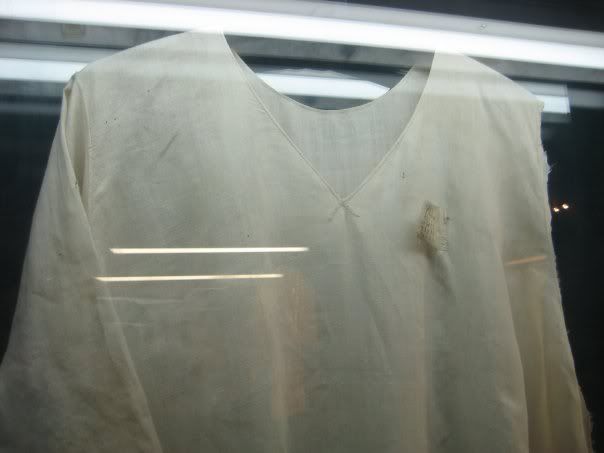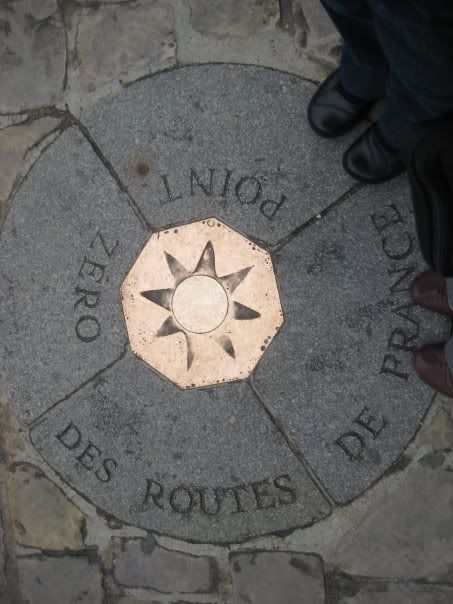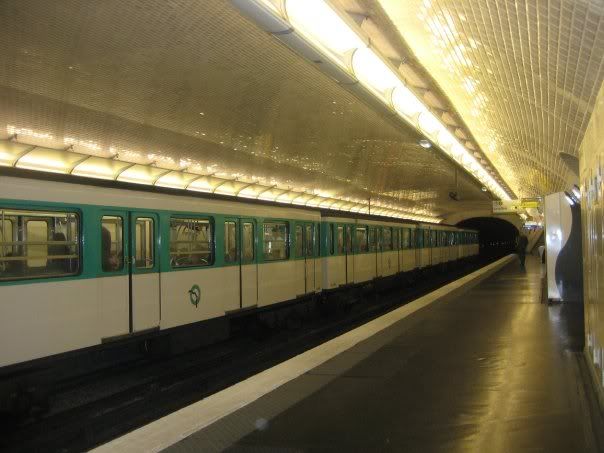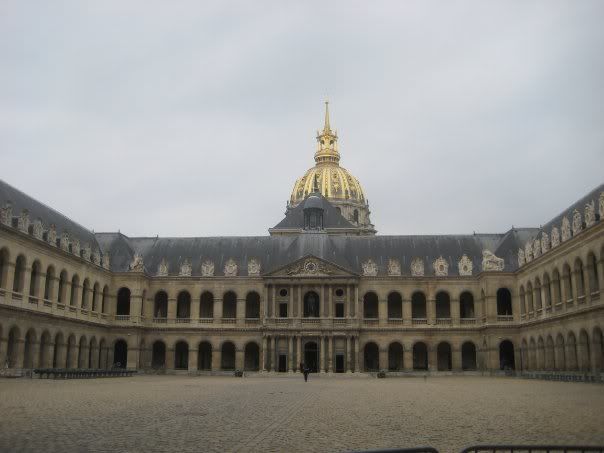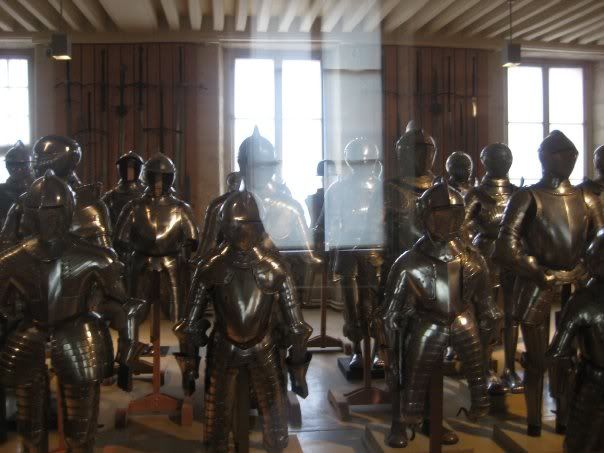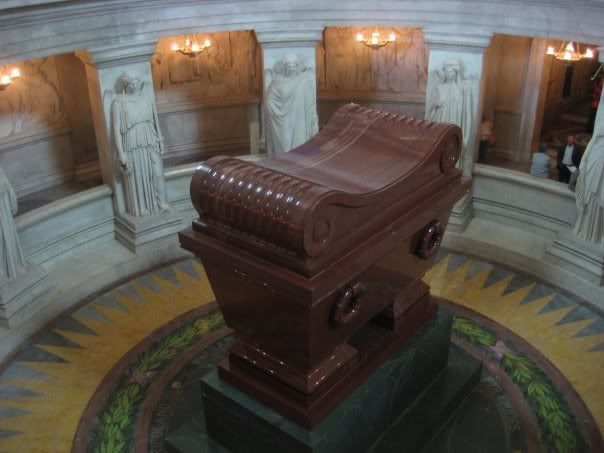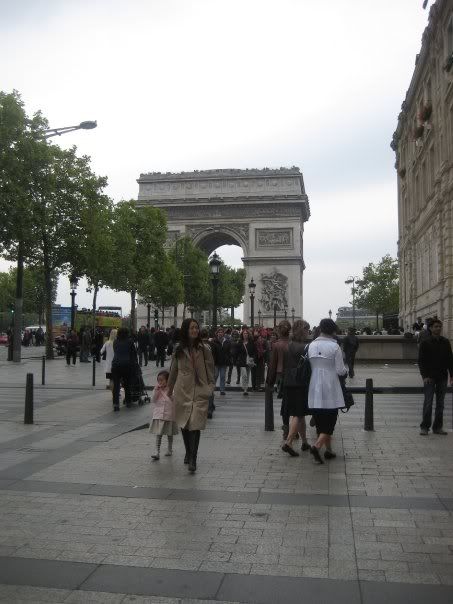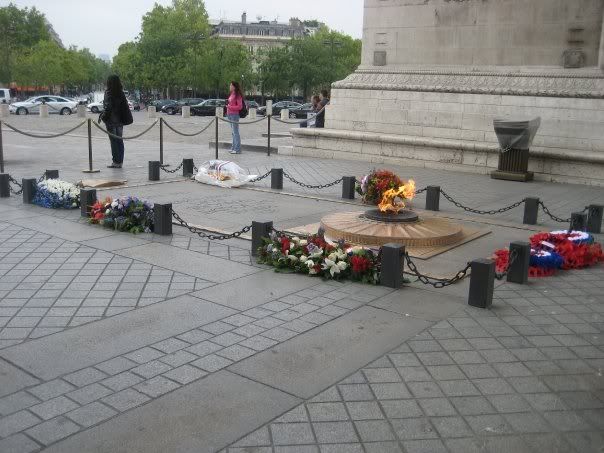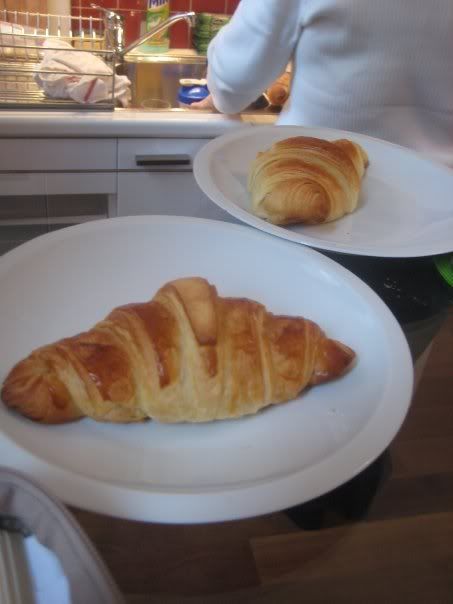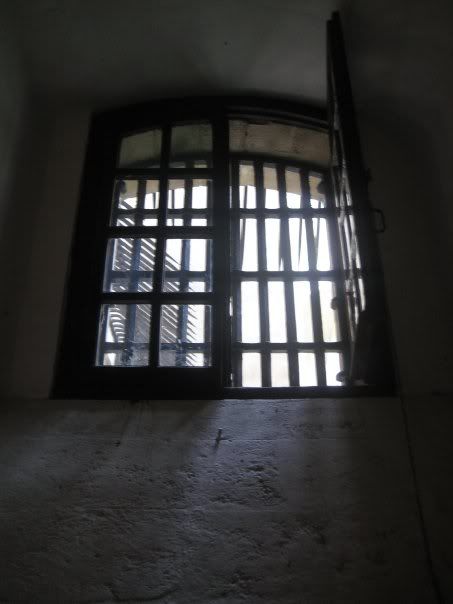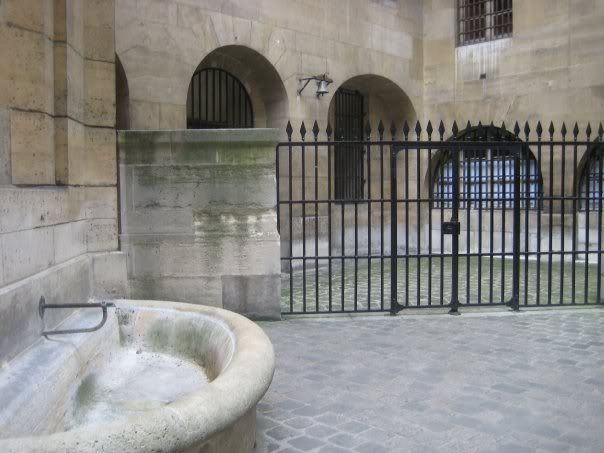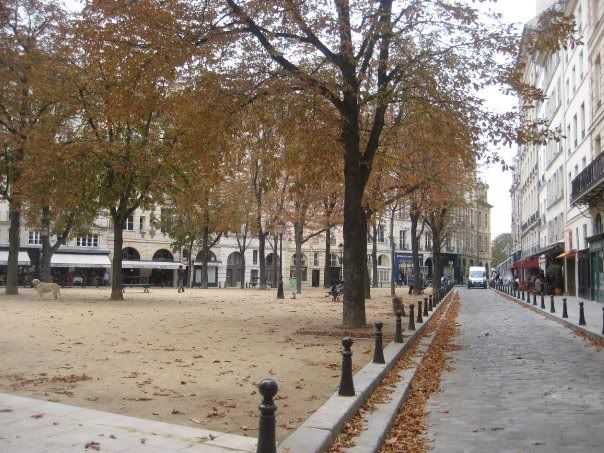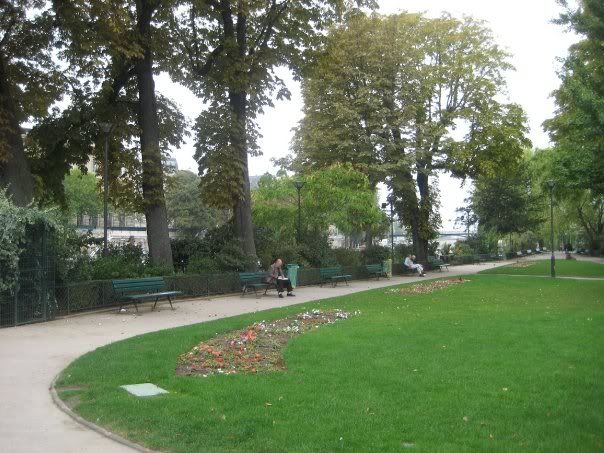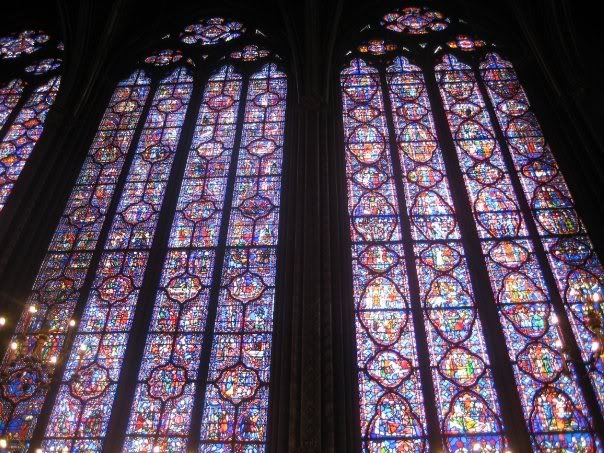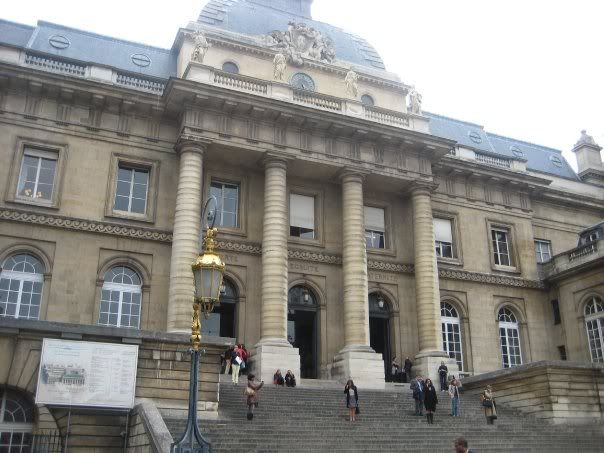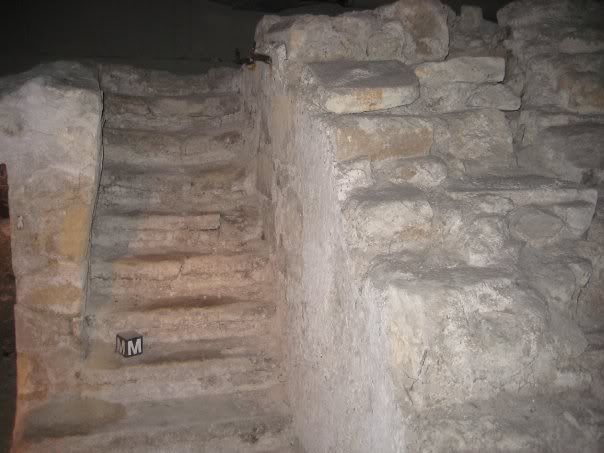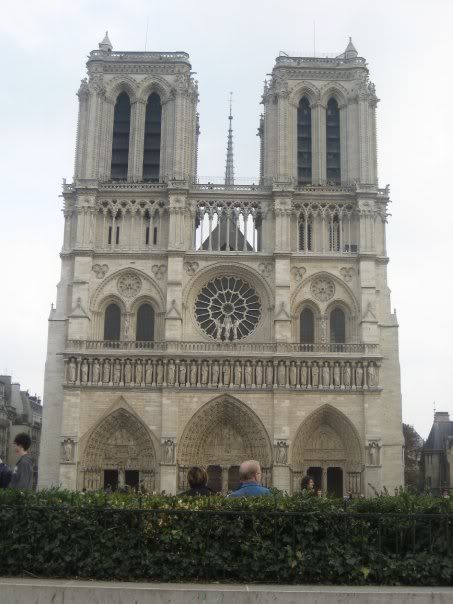My favorite part of the Cathedral by far is a little round painting in the ceiling right over the main altar. It depicts Our Lady against a blue starry background. The medieval simplicity of it was delightful and I just sat and gazed at it until my neck was killing me and I got dizzy. Unfortunately, the church was too dark to take a good photograph so bare memory will have to suffice.
One thing we missed seeing the first time around at Notre-Dame was the treasury. We had to pay a few euros to get in but it was well worth it, despite the advice of shoestring (and irreligious) travel guru Rick Steves. The treasury was filled with ornate gold reliquaries dating between the 11th and 17th centuries, St. Louis' white robe and religious chain, huge wooden vestment cabinets painted with colorful scenes from St. Louis' life, and a collection of tiny ivory cameos of every Pope from St. Peter to Pope Benedict XVI. All but the most recent six cameos, made to complete the collection last year, were anonymously gifted to the Cathedral. Simply beautiful.
Outside Notre-Dame, we found the outlines in stone of the church that Clovis originally built on the site, one that held St. Genevieve's tomb for awhile. Also in the courtyyard of the Cathedral is a stone that marks the very center of Paris.
 Statues of the Kings of Judah on the outside of Notre-Dame. The heads are modern reproductions; the originals were destroyed during the French Revolution when they were mistaken for French kings. However, you can still see the originals in the Medieval Museum at Cluny.
Statues of the Kings of Judah on the outside of Notre-Dame. The heads are modern reproductions; the originals were destroyed during the French Revolution when they were mistaken for French kings. However, you can still see the originals in the Medieval Museum at Cluny. We continued to walk around Notre-Dame, past the sobering Memorial de la Deportation erected in memory of the Jewish people killed during WWII, and across the bridge to the Ile St. Louis, by far my the most charming spot in all of Paris. We got some of their famous ice cream (mine was chocolate and hazelnut) and walked up and down the r. St. Louis to do some serious window shoping. The streets are lovely: street performers play music and visiters enjoy open air cafes. There are signs on store windows though: don't dare to bring your delicious ice cream cones inside!
Another bridge took us back to the mainland, where our next stop was to be the Centre Georges Pompidou, a modern art gallery that most Parisians detest because it is an eyesore with its daring exposed ductwork and exterior escalators. But while we walked we stopped to visit two churches, St. Gervais, whose organ was used by the famous Couperin dynasty, and St. Merri, originally a beloved parish church that is now sadly - tragically - delapidated and now houses more pigeons and homeless than worshippers. Jesus was there, only signalled by the burning lamp. It made me cry; a church should never be so abandoned. It gave me a taste of what a dusty, cobwebbed soul must be like when a man has forgotten the King of His Heart and shoved him in a dark corner.
At the Pompidou, Mommy and I picked our way amongst sunbathers in the courtyard (yes, sunbathers) to the entrace, rode the escalators, peered at the library that was Mommy's old haunt, and finally wandered into the galleries of Picasos and other works upstairs. I am particularly fond of modern sculpture, and found one piece to be most telling: an empty frame with twine and labels tied around it, signifying (to me anyway) how art is mostly labels and trimmings these days, without any real substance or soul.
Mommy was really tired at this point, so she gave me the map and went back to rest. I got my bearings for another sidewalk-bonding session, and walked a rather long way to the Louvre. The Louvre began its life as the second palace of the French kings after they left the Conciergerie, and only later became an art museum. As with most other French buildings (Notre-Dame, Versailles, La Conciergerie, and Sainte Chapelle to name a few), it was at one point going to be razed and was only narrowly saved by a few far-seeing persons who donated money to save it. The new entrance - it wasn't there when Mommy lived in Paris - was very nice, with big cafe's, shops and staircases that were quite pleasing to the eye.
My feet were already killing me and I am not a huge fan of paintings, so I picked a few things to see. I made sure to walk through the Egyptian, Green and Roman galleries (I found Celeste's temple of Zeus and the Venus de Milo) and the medeival and Italian Renaissance galleries (I found some of my favorite religious paintings of St. Francis of Assisi and the Madonna). And, of course, I saw the Mona Lisa. Why is she so famous? I am sure I can't tell you. In my opinion the painting is sort of small and there are far prettier portraits in the gallery. But I took my photo (photos are allowed in French museums) and moved on.
It was hard to decide to be more impressed by the artwork or the fact that the French royals once lived here with their entire court. I don't think I would have minded living there. It was fun to imagine artists lazing around the galleries where the art is now displayed, artists that more often than not were like leeches on the crown.
I took the metro back via the Louvre stop, accessible in the basement of the museum at the center of the basement shopping mall, complete with a Starbucks. I met Mommy back at the room, and we went out for dinner at a creperie near r. Montorguiel. It was a nice place with a family atmosphere. We each bought two crepes, one for dinner and one for dessert. My dinner was one made with egg, cheese, ham and sweet onion, and the dessert one was a chocolate (yay!) crepe with whipped cream.
The Friday night parties had already started on r. Montmartre as we walked home. It looked to be another loud night in our apartment building. We called home to talk to family in the U.S. and went to bed.
